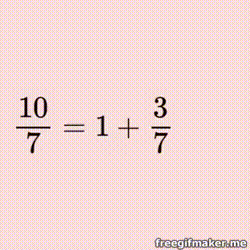©2023 Compass Learning Technologies → GXWeb Showcase → GXWeb Continued Fraction Collection → Continued Fractions and Magic Tables
Continued Fractions and Magic Tables
Saltire Software, home of Geometry Expressions and GXWeb
Symbolic computations on this page use the Nerdamer Symbolic JavaScript to complement the in-built computer algebra system of GXWeb.
|
Exploring the Magic Table for Continued Fractions An Introduction to Continued Fraction Arithmetic |  |
Exploring the Magic Table for Continued Fractions
Continued Fraction Arithmetic
Dig Deeper: Related References
Behind the Scenes
©2023 Compass Learning Technologies ← GXWeb Showcase ← GXWeb Continued Fraction Collection ← Continued Fractions and Magic Tables